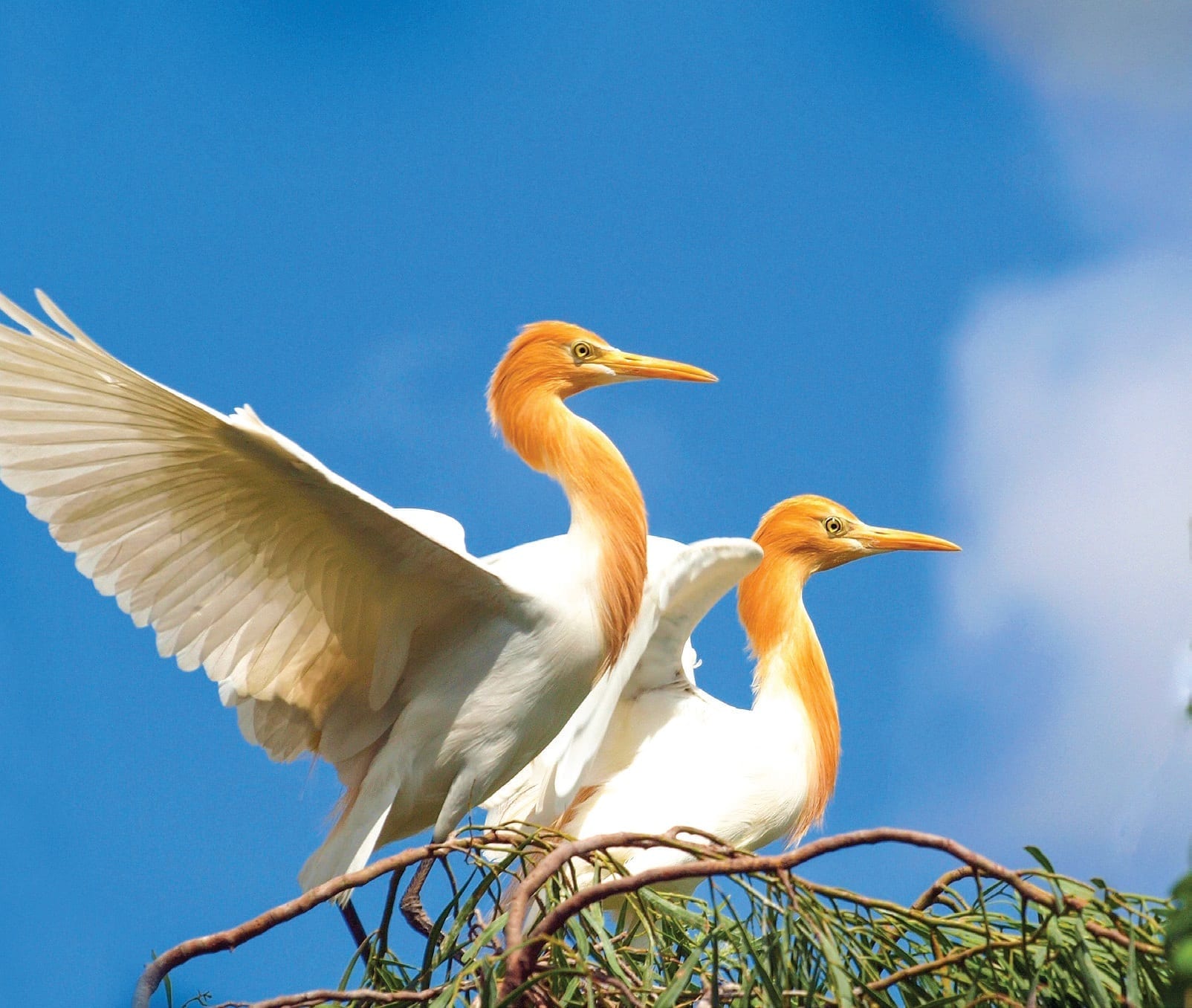Tags: Wildlife. Birds. Australia. Queensland. Bribie Island. CATTLE EGRET ARDEA IBIS
Cattle Egrets can frequently be seen in the grassy paddocks on the mainland close to Bribie Island and along Bribie Island Rd, Toorbul and surrounding areas. When feeding, they usually stay close to cattle or other grazing animals picking up insects that have been disturbed by the beasts’ hooves.
Grasshoppers are their favourite food but they also eat other invertebrates, frogs, lizards and small mammals. Except for an occasional sighting in the wetlands, they are not commonly found on Bribie Island. Cattle Egrets originated in Africa but have spread to many other parts of the world.
Featured image(above): Taking off…
In the 1940s they began migrating to Australia from Asia and are now widespread throughout the continent and into Tasmania. They are increasing in numbers and expanding their territories. When the breeding season begins usually in late October the white birds with yellow bills and legs undergo a startling transformation. Their legs and faces turn red and their bills become red with a yellow tip. The Plumage on the head, back and breast turns to bright orange.
Cattle Egrets nest in large colonies near water, often with other water birds such as Ibis, Herons, Cormorants and other species of Egrets. During this time the rookeries become a hive of activity with partner selection lasting for several days. Squabbles with rival males, courting rituals, and nest building make for a busy scenario. Cattle Egrets are monogamous for the breeding season but select a new mate every year.
Nests are a platform of loose sticks. Females are the nest builders with the males flying out to collect the sticks and bringing them back in their bills and presenting them to the females to position on to the nest. Clutches of 3-6 pale blue eggs are laid in the nest and incubated by both parents for 24-25 days.
Eggs are often stolen by crows or raptors. I have witnessed crows raiding unattended nests and flying off with the eggs still intact in their bills. Many of the young chicks don’t survive. Some are starved out by their older siblings. If there are three chicks in the nest there is usually one much smaller than the other two and will probably not survive. Some fall out of the flimsy nest and starve on the ground and some are taken by predators. Surviving young are ready to leave the nests at about 6 weeks.
Cattle Egrets are sometimes confused with Intermediate Egrets which are of similar colouring but with longer necks. Little Egrets are of similar size but have black bills which make them much easier to distinguish between the two.
It is easy to distinguish Egrets during the breeding season when Cattle Egrets become so colourful. Sexes are similar with males a little larger at 46-56 cm in length and weighing 270-512g. Animal pastures and man-made waterways have benefited Cattle Egrets and contributed to their rapid spread.
Farmers welcome them as they help to keep down the insect population and eat the ticks and flies on their cattle. Conservation status is secure and expanding.
Other Articles
https://thebribieislander.com.au/the-wildlife-of-bribie-island/





